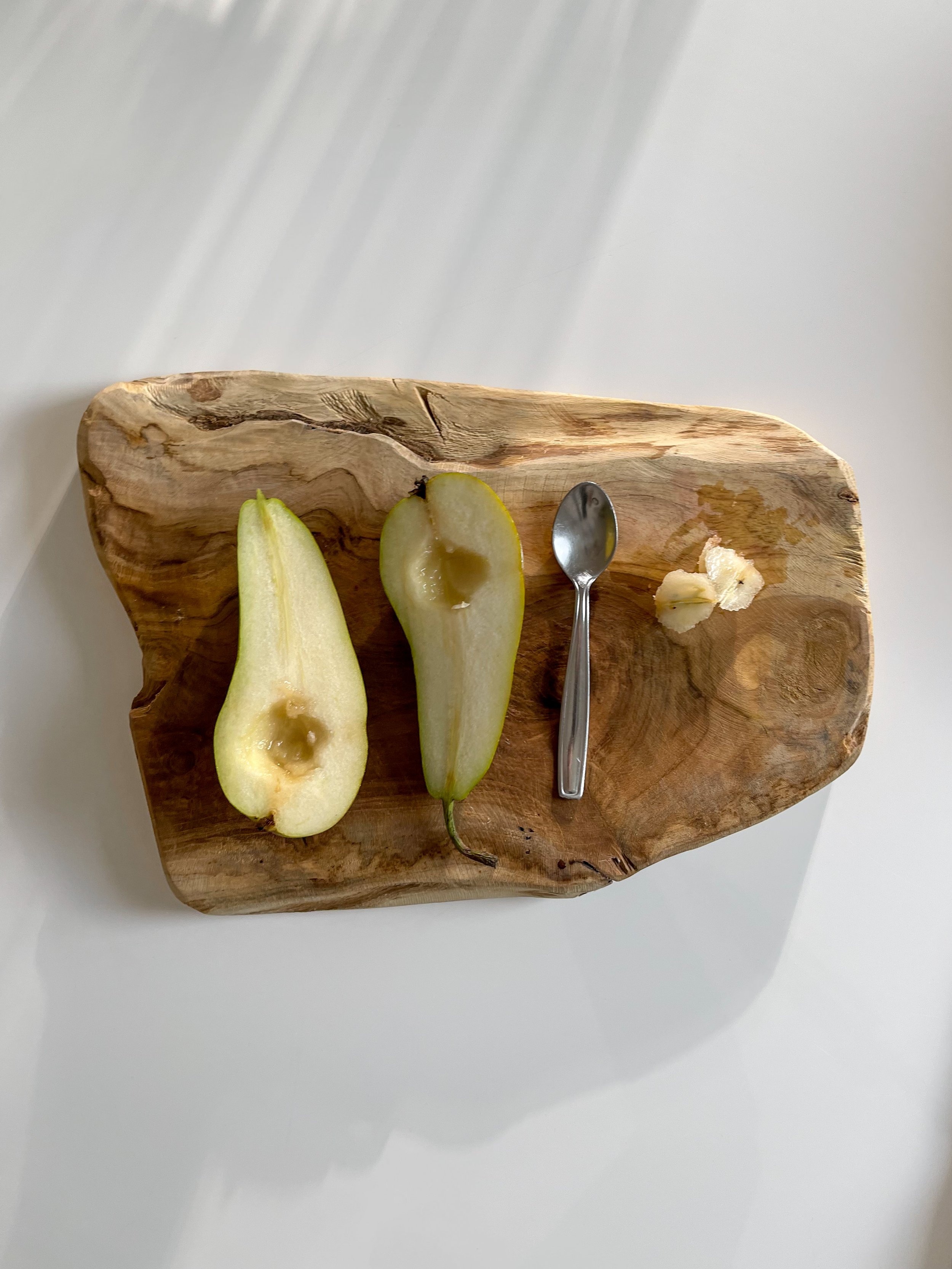Upside down pear and toasted milk cake
This cake is inspired by the way my mom makes halwa; she always toasts the dry powdered milk. This makes the halwa taste like toffee (we call her halwa toffee halwa). So that’s almost what this cake tastes like, but more complex; partly due to the addition of the browned butter and partly due to the pairing (pear-ing) of the slightly acidic and sweet pears.
It also tastes like it contains all the (good) spices such as cinnamon, nutmeg, cardamom, etc., except it doesn’t contain any of them.
There are 4 steps to making this cake (browning butter, toasting powdered milk, slicing pears and making the cake), so i’ve tried simplifying everything as much as i can while developing it and added photos of the different steps.
I also made a test batch were i replaced the toasted milk powder with flour (so 250 g flour total). I toasted the flour slightly- this resulted in a cake that was kinda similar taste wise to this one, but the toasted milk powder definitely yields in a cake with more depth of flavor. SO, if you don’t have toasted milk powder, you can replace it with flour. It won’t be the same, but it is kinda close. :)
Either way, if you make it, I hope you love it as much as i do.
Ingredients
for the cake
Butter, 250 g (plus an additional 25 g butter, see method)
Sugar, 225 g
2 eggs
Vanilla, 1 tsp
Milk, 100 g
Flour, 200 g
Powdered milk, 50 g
Baking powder, 1 tsp
Pearl sugar (to top the cake after baking, encouraged, but very optional)
for the pear layer
2-3 pears (depending on their size)
Sugar, 3 tbsp
Lemon juice, 2 tbsp
Vanilla, 1 tsp
This cake is baked in a 22 cm cake tin.
Method
1st step - brown the butter
To brown the butter, add 250 g butter to a saucepan and cook on medium-high heat for about 3-4 minutes. If the butter bubbles too much, turn it down to medium heat. Stir throughout this whole process.
After bubbling, the butter will start to foam on top (3rd photo). This is when the browning will happen. Keep stirring and scrape the bottom of the saucepan while doing so.
When the butter has a medium-dark brown color, remove the saucepan from the stove.
Weigh the browned butter and write down the amount. It should be around 175-180 g (this is due to water evaporation, see notes).
When the butter has cooled for a couple of minutes, add more (regular, not browned) butter to your browned butter, until you have 200 g total
If you don’t want to weight your butter again, just add 1,5 tbsp regular butter to your browned butter (after it has cooled for a bit!).
2nd step - toast the powdered milk
Add the milk powder to a wide pan and toast it on medium heat until it gets fragrant and visibly brown, make sure to stir it around during the whole toasting process.
This will take about 5-7 minutes.
Just for reference, this is what the milk powder that i use looks like:
3rd step - make the pear layer
Slice the pears in half, remove the core and slice the halved pears into thin slices.
Toss the pears (gently) in sugar, lemon juice, vanilla and layer them on the bottom of your (parchment lined) cake tin and pour the remaining pear-sugar-lemon-juice syrup on top of the pear slices.
4th step - (actually) making the cake
Preheat your oven to 160 C (320 F).
In a small bowl, whisk the flour, toasted powdered milk and baking powder, set side.
Whisk the (still liquid) browned butter with the sugar for about 3-4 minutes (this is mostly to cool the butter down).
Add one egg, whisk for 1 minute, add the other egg and whisk for 4-5 minutes until pale and fluffy.
Pour in the milk and whisk.
Add the dry ingredients and whisk until just combined,
Pour the batter on top of the pears and bake for about 40-50 minutes or until a toothpick comes out clean.
Once baked, wait for a couple of minutes until the cake is cool enough to handle, then flip it and remove the parchment paper.
I like to add pearl sugar on top, as this gives the cake a beautiful crunch, but it’s totally optional.
Notes
It’s important to add more butter to browned butter, since water evaporates during the browning process, resulting in less butter than you started with. So depending on how much water has evaporated from the butter during browning, you’ll have to supplement with regular butter until you have 200 g butter.
I like to let my brown butter cool for a couple of minutes before adding cold butter to it, as the temperature difference will make the (very hot) butter bubble and expand significantly (which goes without saying, but can be dangerous).


















